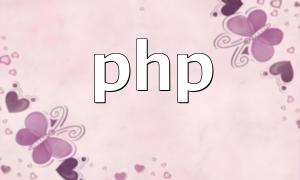In modern internet applications, messaging systems play a crucial role. They allow different applications to exchange data and collaborate. PHP and SOAP technologies offer a convenient way to implement cross-platform messaging systems. This article will guide you through how to build an efficient and scalable messaging system with PHP and SOAP, helping you implement complex use cases.
SOAP (Simple Object Access Protocol) is an XML-based protocol used for exchanging information over the network. SOAP uses the standard HTTP protocol to transmit data, and XML is used to encapsulate and encode the message. It enables interoperability between different platforms and programming languages, supporting cross-platform data exchange.
In PHP, using SOAP is straightforward. PHP has a built-in SOAP extension that provides rich classes and functions, making it easy to create SOAP clients and servers to send and receive messages.
First, we need to build a SOAP client to send SOAP messages to other applications. Here's a simple example:
<?php
// Create a SOAP client
$client = new SoapClient("http://example.com/soap-server");
// Create a SOAP message
$message = array("name" => "John Doe", "age" => 30);
// Send the SOAP message
$result = $client->__soapCall("sendMessage", $message);
// Handle the return result
if ($result) {
echo "Message sent successfully.";
} else {
echo "Failed to send message.";
}
?>
In this example, we first create a SOAP client using the SoapClient class. The client constructor takes the SOAP server's URL as a parameter. Next, we build the SOAP message using an array and call the client's `__soapCall` method to send the message. Based on the return result, we can determine if the message was successfully sent.
In real-world applications, you need to adjust the structure of the message according to the specific interface definitions of the SOAP server.
In addition to creating a SOAP client, we also need to set up a SOAP server to receive and process messages sent from clients. Below is an example of creating a SOAP server:
<?php
// Create a SOAP server
$server = new SoapServer("soap.wsdl");
// Define a function to handle SOAP messages
function sendMessage($message) {
// Process the received message
// ...
// Return the result
return true;
}
// Register the function with the server
$server->addFunction("sendMessage");
// Handle SOAP requests
$server->handle();
?>
In this code, we first create a SOAP server using the SoapServer class and specify a WSDL file. Then, we define a `sendMessage` function to handle the received SOAP messages. Inside the function, we can process the message as needed and return the appropriate result. Finally, we register the function with the server using the `addFunction` method and call the `handle` method to process the requests.
With these steps, you can easily set up a basic SOAP server to handle incoming messages from clients.
While the above examples demonstrate how to create a basic SOAP messaging system, scalability and feature extensions are crucial in real-world applications.
First, you can extend the SOAP client and server classes and functions to handle more complex messaging and data operations. For instance, you could define different message types, implement data encryption or compression, support asynchronous messages, or use callback mechanisms.
Furthermore, you can integrate other technologies and tools to further extend the system's capabilities. For example, using a database to store and manage message data, implementing message queues to handle high-volume messaging, or employing authentication and authorization mechanisms to ensure the security and integrity of messages.
This article introduced how to create a scalable messaging system using PHP and SOAP. We first covered the basics of SOAP and how to use it, then demonstrated with example code how to create SOAP clients and servers to send and receive messages. Finally, we discussed scalability and feature extension ideas for building more advanced messaging systems.
PHP and SOAP are powerful tools for building messaging systems, but they are only one option among many technologies. Depending on your specific application scenario, you can choose the most suitable technology for implementation.









